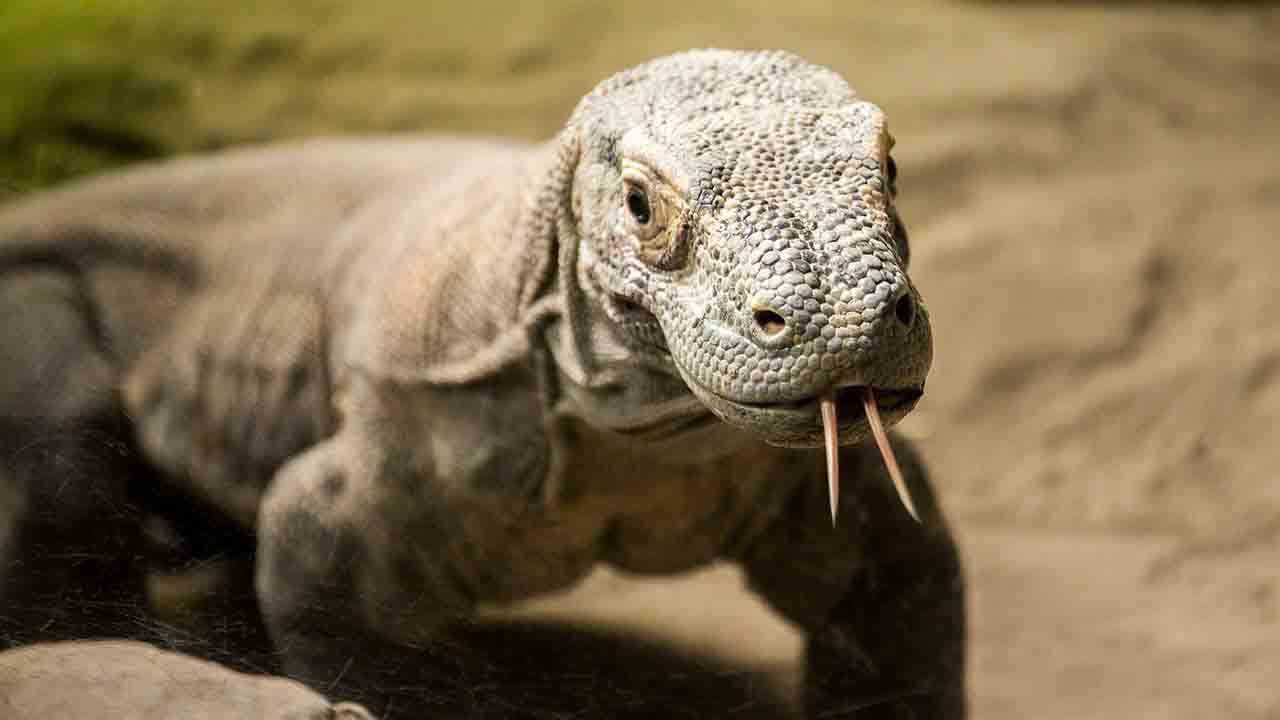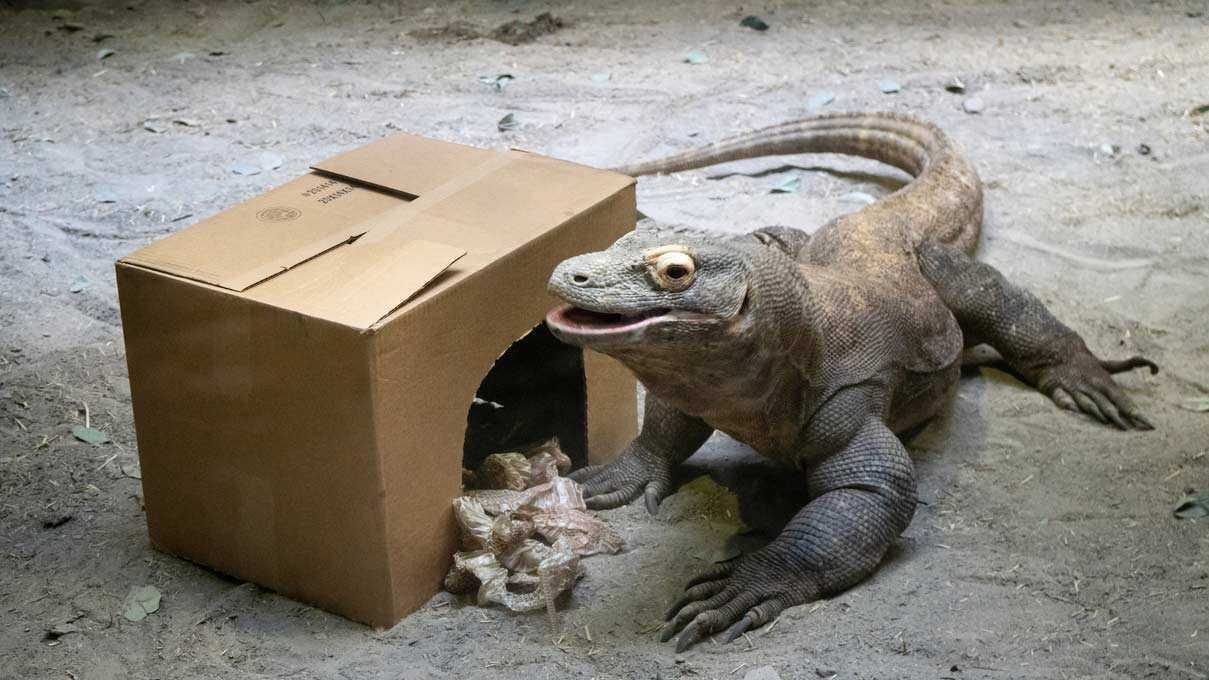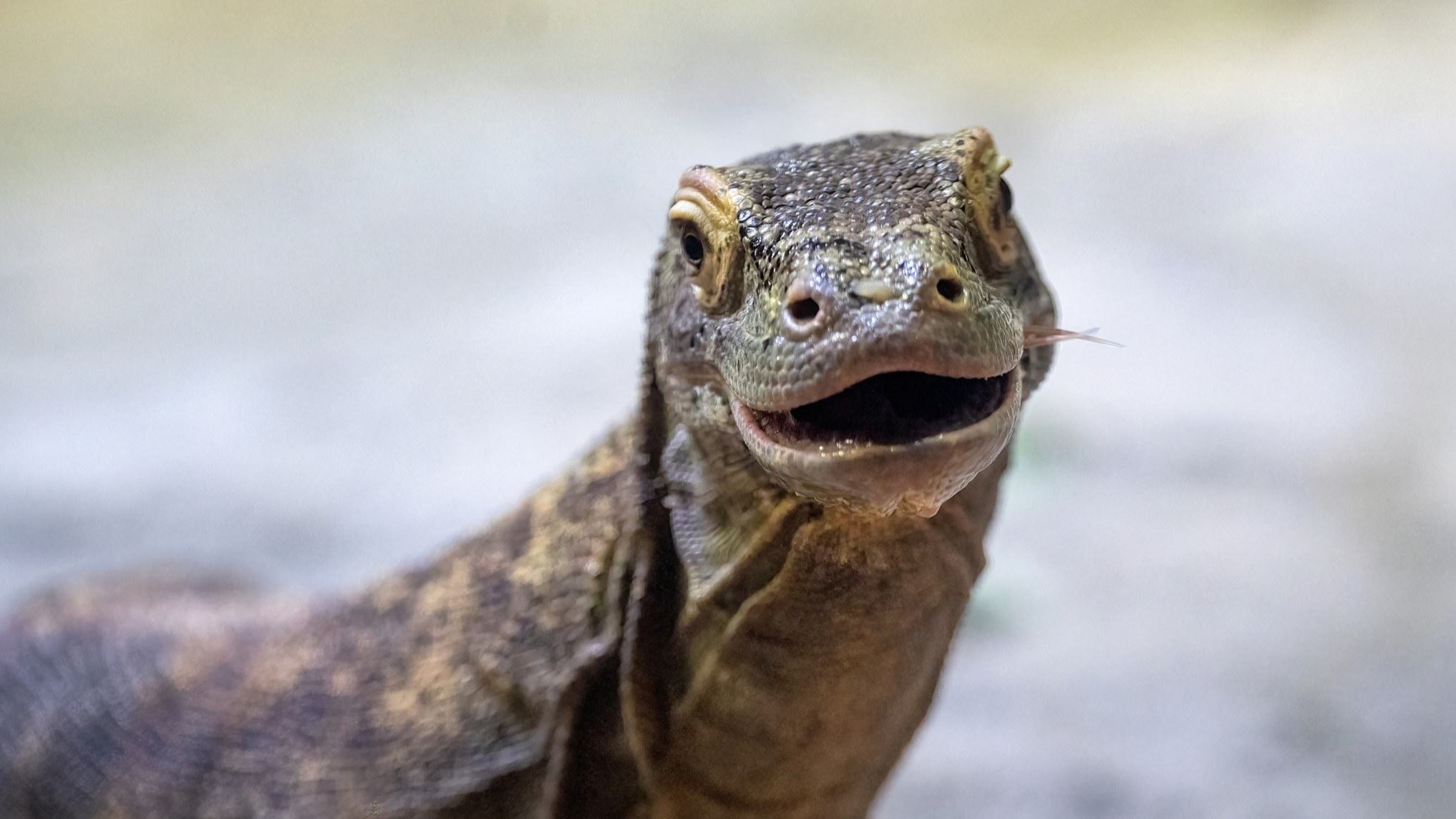Length: 8-10 feet
Weight: Average 100 lbs, up to 300 or more
Komodo dragons are the heaviest lizards on the planet. They have long, flat heads with rounded snouts, scaly skin, bowed legs, and huge, muscular tails.
Venom-Bacteria Debate
Komodo dragons have long been thought to kill their prey with high levels of bacteria in their saliva. Experts previously accepted the conclusion that the prey died of sepsis. However, an Australia-based researcher observed as a keeper at the Singapore Zoo, who had been bit by a Komodo dragon, bled for an unusually long period of time. He discovered that these lizards actually have a large venom gland below their jaw and was able to extract venom from a terminally ill lizard to study. It is now known that Komodo dragons are venomous and that their toxin both lowers the blood pressure of a bite victim and prevents blood clotting, which would weaken a prey and cause it to go into shock.
Diet
Komodo dragons are not very picky eaters and have been known to bring down a meal larger than themselves. Adults prefer deer, goats, monkeys, rodents, and even other, smaller Komodo dragons.
Their sharp serrated teeth, one of their deadliest weapons, act as efficient tools for eating, easily ripping at the tough flesh of prey. They search for food with their forked tongues and a special feature on the roof of their mouth called a Jacobson’s organ, which helps identify airborne molecules. Komodo dragons can detect some prey as far as 4 km away.
How can they eat such large meals?
Komodo dragons have extremely strong muscles in their jaw, throat, and neck, as well as several movable joints like the intra-mandibular hinge, which opens the lower jaw unusually wide. This allows them to swallow large chunks of meat. The stomach expands and is flexible, allowing an adult dragon to ingest as much as 80% of its body weight in a single meal.
When threatened, Komodos can also regurgitate the contents of their stomachs and lessen their weight to flee. Since they also ingest the fur and bones of their prey, Komodo dragons regurgitate "pellets" of this undigested matter.
Habitat
Komodos have thrived in the harsh Indonesian climate for millions of years. While they appear to prefer tropical forests, they can be found across the islands from the beach inward.
Reproductive Behavior
Females will lay an average of 18 or up to 30 eggs in burrows or in the very large abandoned nests of megapodes (several species of chicken-like birds). While females will protect the eggs during the nine-month incubation period, there is little evidence of parental care after the young hatch.
The juveniles, in fending for themselves, are capable of climbing trees to avoid predators and search for food.
Territorial Behavior
Komodo dragons tend to be solitary except during mating season. Fighting during mating season is common as the male dragons engage in violent altercations, often ending with the "loser" retreating with bloody wounds.
(Not So) Fun Fact
Komodos have been observed cannibalizing (eating their own species) the young, so juveniles will often roll in carrion intestines or the fecal matter of adult dragons. The smell can deter a potential attack by adults, who possess instincts to avoid conflict with a mature dragon.
Concerns
Population estimate: 5,000
Limited Range - Their range is limited to a few Indonesian islands (Lesser Sunda Islands) including Rinca, Padar, Flores, and of course Komodo - however, dragons have not been seen on the island of Padar since the 1970s. The limited range naturally restricts the space where these animals can thrive, and with human populations growing, their habitat is threatened.
Human Impact - Thousands of tourists eager to see these large reptiles flock to the region year after year, and while tourism positively impacts local communities, the conservation impacts are often detrimental. Even with protective laws in place, illegal poaching also continues to play a role in population decline. Indonesia has taken measures to limit the impact of tourism on islands like Komodo.
Celebrations
Conservation of this ancient species is of significant concern and the good news is limited. However, this animal is highly valued, and a number of organizations have established conservation programs. The resident Komodo dragons at the Virginia Aquarium are part of the greater AZA Species Protection Plan Program. You can read more on our Conservation in Action page.




